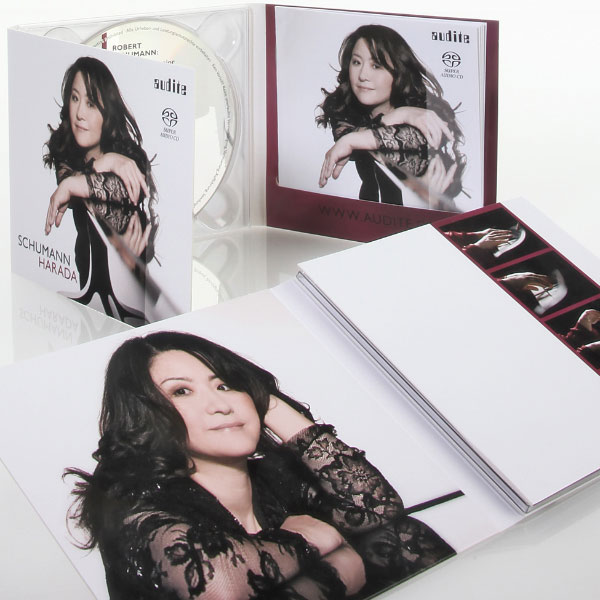Logowanie
Mikołaj - ten to ma gest!
Elton John, The Mamas & The Papas, Cat Stevens, Rod Stewart, Bobbie Gentry, Stevie Wonder, Engelbert Humperdinck
Memory Lane
Edycja Numerowana - 1000 egzemplarzy w skali światowej
RACHMANINOV, Eiji Oue, Minnesota Orchestra
Symphonic Dances / Vocalise
Best Recordings of 2001!!! NAJCZĘŚCIEJ KUPOWANA PŁYTA Z RR!
Karnawał czas zacząć!
Music of Love - Hi-Fi Latin Rhythms
Samba : Music of Celebration
AUDIOPHILE 24BIT RECORDING AND MASTERING
CHOPIN, LISZT, DEBUSSY, DVORAK, Gerhard Oppitz
Dances romantiques - A fantastic Notturno
Wzorcowa jakość audiofilska z Clearaudio
Winylowy niezbędnik
ClearAudio
Double Matrix Professional - Sonic
najbardziej inteligentna i skuteczna pralka do płyt winylowych wszelkiego typu - całkowicie automatyczna
SCHUMANN, Hideyo Harada
Fantasia in C major / Kreisleriana, Op.16 / Arabeske, Op.18

- Hideyo Harada - piano
- SCHUMANN
> Following her highly successful recordings on SACD format of works by Grieg (aud. 92.555) and Tchaikovsky and Rachmaninov (aud. 92.569), the Japanese pianist Hideyo Harada presents her third SACD with three key works by Schumann, celebrating the 200th anniversary of his birth. In a coherent interpretation, Schumann’s works offer several mysteries and countless possibilities. With her new recording, Hideyo Harada exhibits a highly personal and carefully considered reading of three major romantic works. She realises with remarkable plasticity Schumann’s pivotal concerns from a crucial period of his artistic development: the wide, quasi-narrative context including stark contrasts and differentiated, filigree details; the characteristically free flow of tempo and the clear contours of the complex course of his music. Relationships to romantic literature (“Kreisleriana”), to the classical legacy of spacious musical design (“Fantasie” in C major) and to abstract visual art (“Arabeske”) accentuate the open horizon under which Schumann saw his music between 1836 and 1838.





























